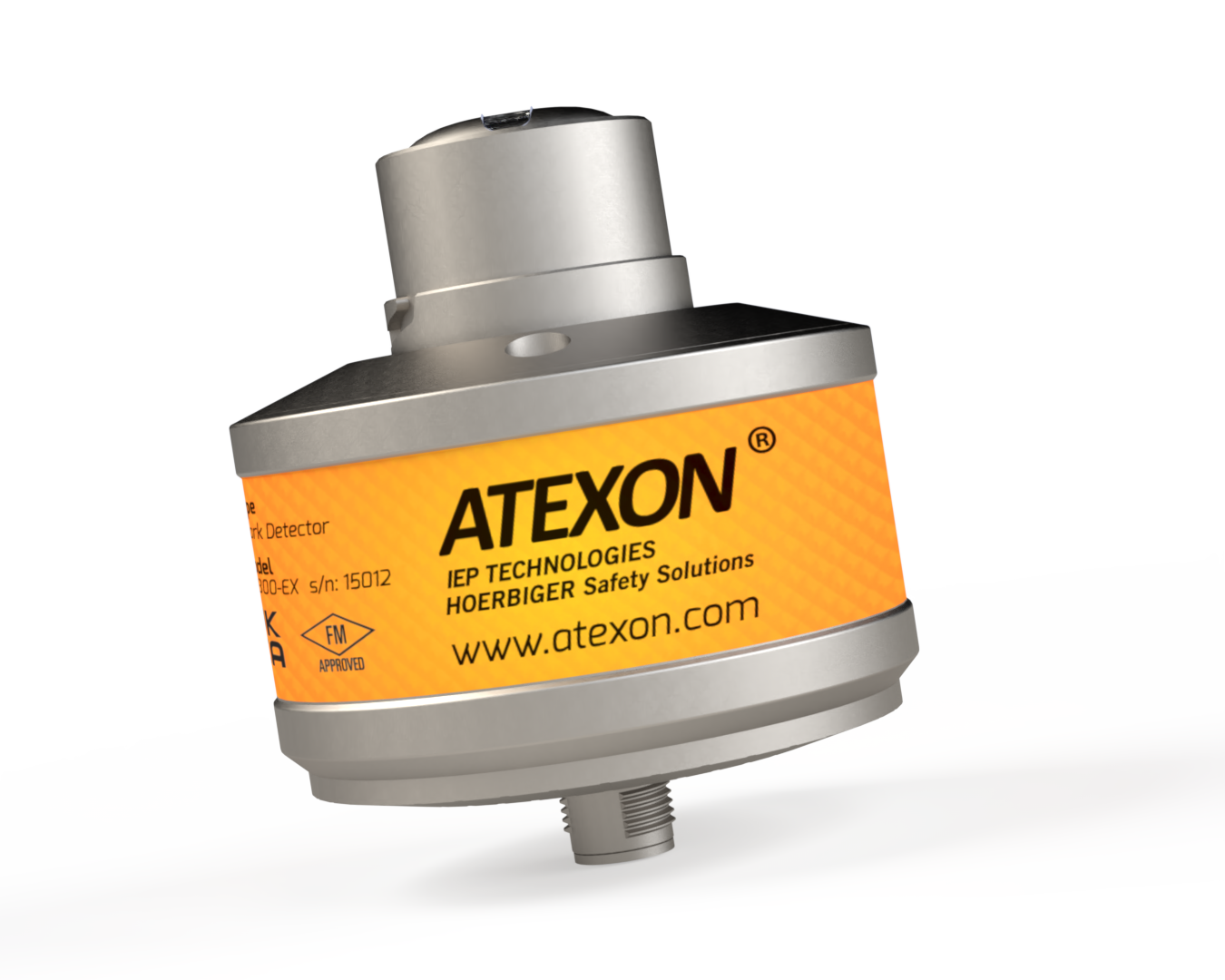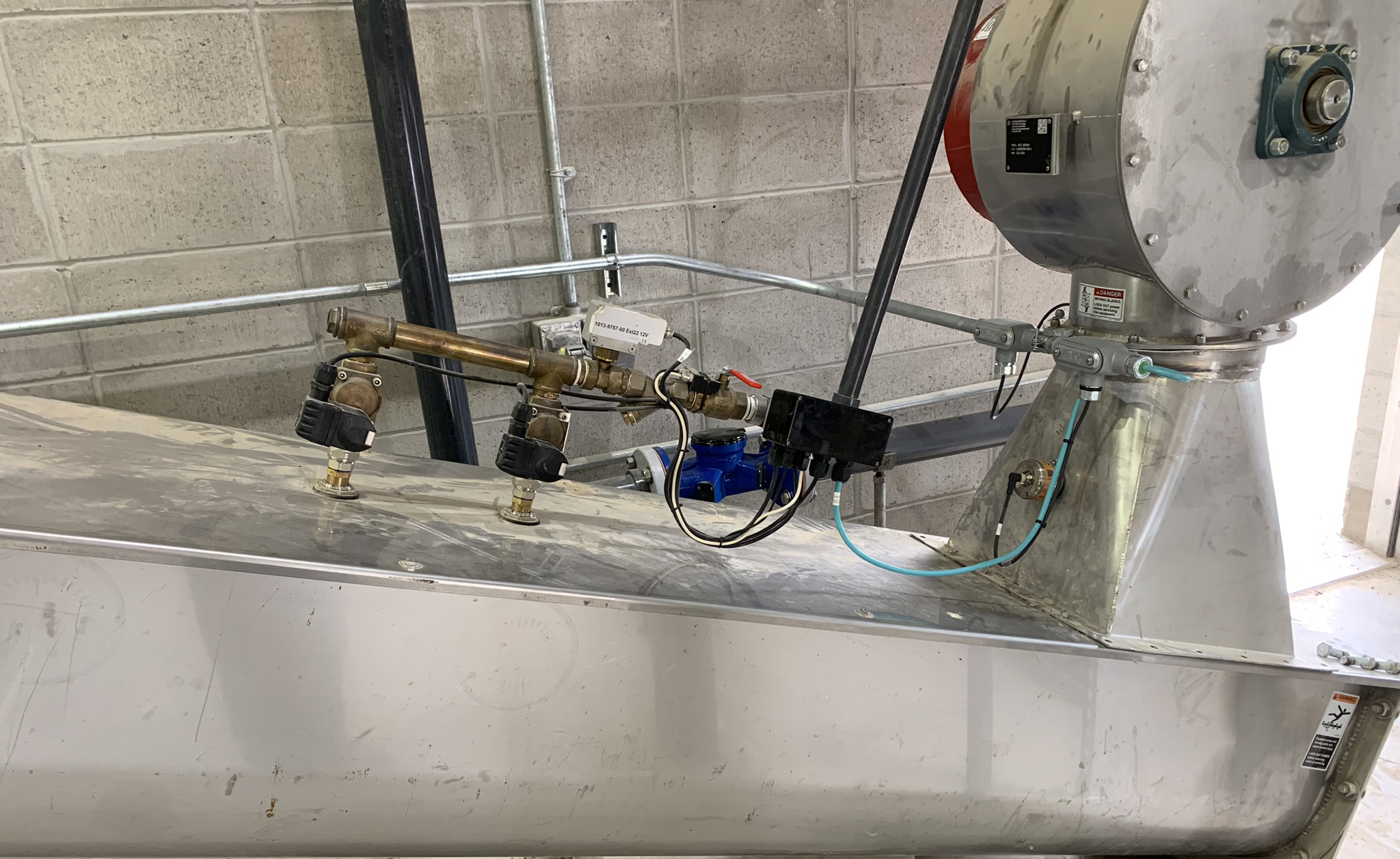
Background and Challenge
An agricultural facility in the Midwestern United States faced a critical safety challenge with its fiber drying and storage operations. The process involved drying wet fibrous material in ovens and then conveying it to storage buildings for later use. Past incidents of over-drying led to sparks and burning embers, which posed a significant risk to the storage areas. This customer approached IEP Technologies for a reliable, high-quality solution to their hazard. Their problem contained additional complexities due to the elevated process temperatures post-drying, as well as the residual moisture and humidity found in the process material.

Spark detection systems are a cornerstone in industrial safety for their use in preventing industrial fires and explosions. These systems are designed to identify and extinguish hazardous sparks and hot particles present in manufacturing process material that may pose as ignition sources to potential fire and explosion hazards.
Traditional spark detection systems typically use either photo or thermal sensors capable of detecting either visible or infrared (IR) radiation. However, the effectiveness of both types is heavily influenced by this customer’s process characteristics.
Principles of Spark Detection
Whether it’s hot metal sparks or the burning of combustible material, all hot ignition sources emit radiation across a broad spectrum in a process called incandescence. This is the emission of electromagnetic radiation resulting from material at elevated temperatures. Incandescence produces both visible light as well as thermal radiation.
Traditional industrial spark detectors are designed to detect either infrared radiation or visible light based on the following concepts:
Visible Light Detection: Through the process of incandescence, as physical matter is heated, its electrons transition between energy states. At around 977 °F (525 °C), this results in the emission of visible light. Thus, these spark detectors are designed to detect the visible light emitted by incandescent hot ignition sources.
Inside enclosed process vessels and interconnecting ductwork, sparks become readily visible to these detectors.
Infrared (IR) & Near-Infrared (NIR) Detection: Detectors that sense IR and NIR radiation are sensitive to the thermal radiation emitted by hot ignition sources in the process line. This sensitivity is particularly effective in spark detection due to its ability to detect dark ignition sources. These dark ignition sources can be hot particles or smoldering materials that, while not hot enough to emit visible light, are still hotter than the minimum ignition temperature of the surrounding process material.
A common misconception is the assumption that because IR detectors can detect not only visible sparks but also dark ignition sources, it must then reason that IR detection is a suitable replacement for visible detection. However, the ability to detect visible light emitted by sparks or embers in processing equipment offers two significant advantages over IR-only detection, particularly under conditions that affect infrared detection.
Conditions that Impact Spark Detection
- High Ambient Temperatures: IR Spark Detectors operate by measuring the perceived thermal radiation intensity as compared to ambient levels. In cool environments, sparks easily stand out for detection. However, as process temperatures increase, the contrast between the background thermal radiation and the radiation emitted by a spark is reduced. In many industrial hot process applications, elevated temperatures in the manufacturing process can act to camouflage the NIR and IR thermal radiation of sparks. In these cases, visible light detection helps to differentiate between sparks and background radiation.
- Influence of Moisture: Water has a relatively weak absorption of visible light. This is why liquid water appears transparent to the naked eye. However, water, in both its liquid and gaseous form, strongly absorbs radiation across the NIR and IR radiation wavelengths. This is particularly dangerous in relation to spark detection. When transporting material through pneumatic or mechanical conveying, it must be assumed that ignition sources will not always be lying on top of a pile of material ready for detection. Instead, as ignition sources are often buried or mixed in with product through conveying, there is a risk that the moisture content present in the material, such as green wood or moist fiber, will absorb IR radiation, blinding the IR-Spark detectors to the ignition source. While Visible light from incandescence is largely unaffected by the presence of water, IR-spark detectors may be rendered ineffective in humid environments or process material with moderate moisture content.
IEP Technologies’ Multispectral Detector
It was clear this customer required both visible and thermal radiation detection as a solution to their challenges. IEP Technologies designed the SD300-EX, a multispectral Spark Detector for applications precisely like this. The integration of visible, near-infrared, and infrared-detectable wavelengths in a single spark detector represents a significant advancement in fire and explosion prevention technology. Combining these detection methodologies creates multispectral spark detectors that provide increased reliability in diverse environments. By offering a more accurate and reliable method of spark detection, multispectral spark detectors lead to improved production and life safety through the mitigation of spark hazards. These detectors enable quicker and more precise responses to potential ignition sources, reducing the risk of fires and explosions. This not only protects personnel and property but also minimizes downtime and associated costs.
IEP Technologies USA
Brant O’Brien
brant.obrien@hoerbiger.com


